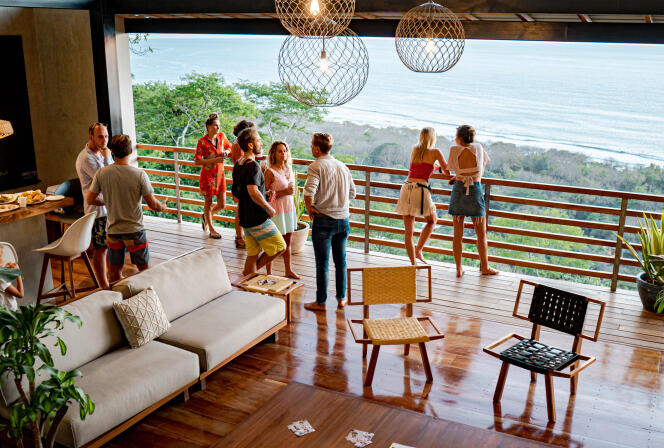How digital nomads became a booming market
3 min read

Video-conferencing in a large common area, before surfing the waves in the evening and sharing meals and activities with roommates you just met the day before… It’s all part of the experience for a few days or weeks before you take off for somewhere else. Combining the practical and the pleasurable, work and leisure, the individual and the collective, ephemeral “co-living” offerings in exceptional spots, in France or abroad, are proliferating.
Cap-Ferret or Cape Town? Morzine or Tenerife? Freelancers and mobile employees now have a wide choice of places to stay, wherever they like, without fear of being left alone to struggle with a weak internet connection. Taking advantage of the development of “workcation,” a contraction of “work” and “vacation,” this concept of working away from one’s office or home, in places where it’s good to rest (seaside, mountainside, countryside), has given rise to a whole ecosystem of hybrid spaces with a view.
Emmanuel Guisset founded the website Outsite in 2015, based on his personal experience. Five years earlier, the Belgian entrepreneur, based in California, found himself a “digital nomad” after leaving his start-up. Tired of looking for a place to live and work, he converted a villa in Santa Cruz, near San Francisco, into a mixed-use stopover. The formula caught on. With his first clients, who have since become associates, he is now at the head of one of the leading short-term co-living operators (along with Selina, a hotel chain created in 2014 by two Israeli entrepreneurs). His 5,000 or so regular clients can now choose from around 50 destinations.
Evading anti-Airbnb measures
In 2021, the start-up switched from large houses to small hotels, “easier to transform into coliving spaces, from 10 to 50 rooms, with large common areas,” explained the man in his 40s, who has currently taken up winter residence in Costa Rica and will fly to Portugal in a few months. The “co-livers” (mostly Americans working in tech and marketing, or creatives) stay between three days and four months at most. “Beyond that, people get used to each other and the group dynamic is broken.”
Offering properties mainly in Latin America (Mexico, Chile, Costa Rica, Nicaragua), the US (California, Colorado, New York) and Southern Europe, the start-up hopes to quadruple the number of rooms to 3,500 in five years, thanks to the €300 million provided by three investment funds at the end of 2023. Its target markets include Portugal (Madeira is one of the most popular destinations for co-livers) and Spain, as well as France. Already established in Bordeaux and the Basque Country, Outsite is due to open its first short-term co-living facility in Paris after the Olympic Games. Less costly in terms of charges and staff compared to the traditional hotel business, this model has the advantage of bypassing the limitations and bans on furnished tourist accommodation (such as Airbnb) already in place or planned in a number of major cities.
You have 47.33% of this article left to read. The rest is for subscribers only.



